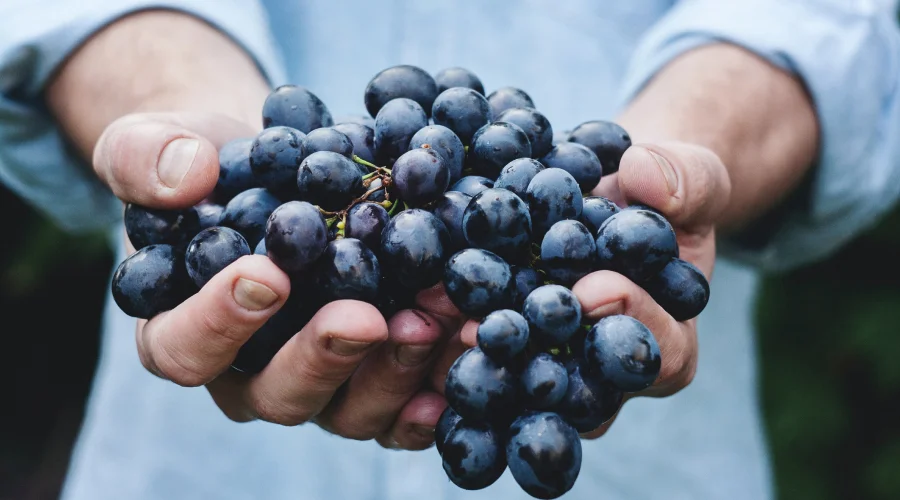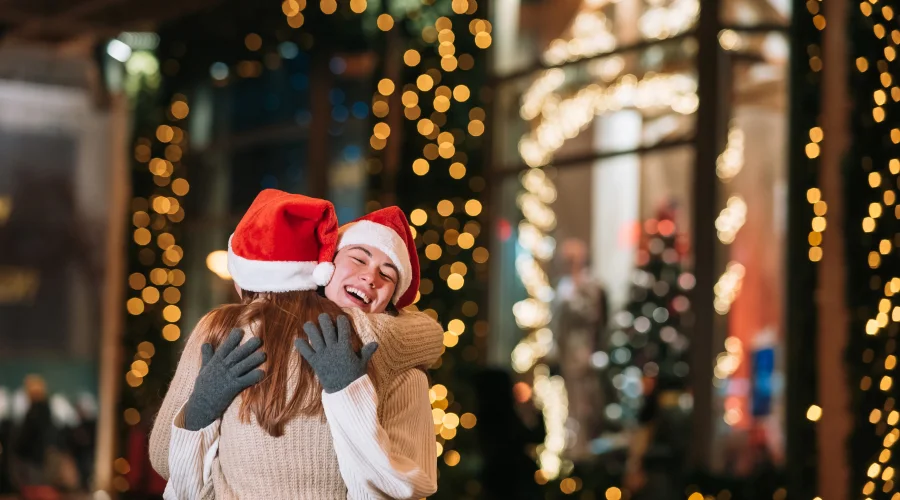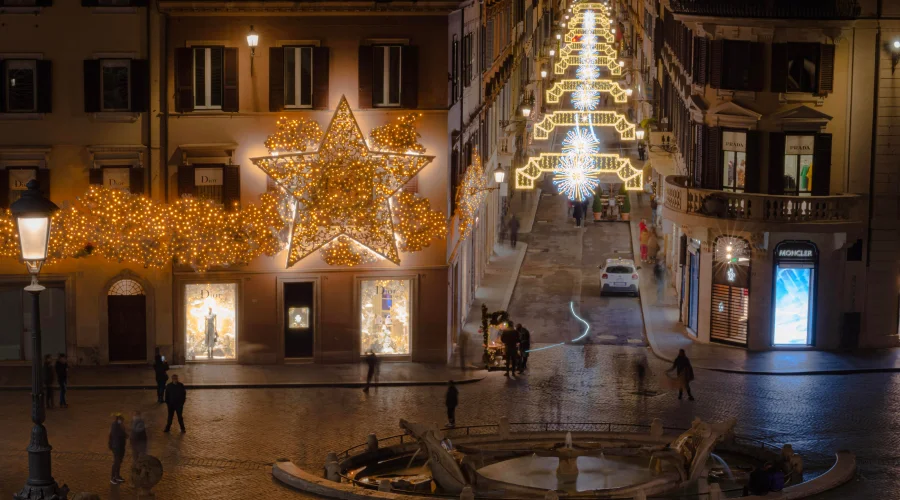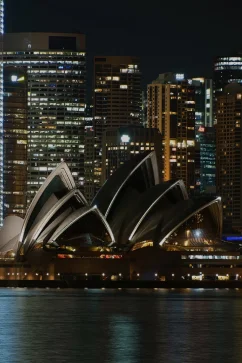Local Festivals in Rome: A Celebration of Tradition and Community

Rome, Italy’s capital, is not only renowned for its historical landmarks but also for its vibrant local festivals that reflect the city’s rich cultural heritage and strong sense of community. Beyond the grandeur of ancient ruins and art, these festivals provide a unique opportunity for both locals and tourists to immerse themselves in the heart of Roman life. In this article, we will explore some of the most cherished local festivals in Rome and the ways in which they celebrate tradition, culture, and the spirit of togetherness.
The most famous local parties
Festa di Noantri
Festa di Noantri, which translates to “Our Feast” in the local Roman dialect, has deep historical roots dating back to the 16th century. The festival is dedicated to the Madonna of Mount Carmel, the patron saint of Trastevere. Legend has it that a fishing boat recovered an effigy of the Madonna from the Tiber River, which was seen as a miraculous event. This discovery led to the establishment of the Madonna’s sanctuary in the heart of Trastevere.
The Religious Procession
At the heart of the Festa di Noantri is a solemn religious procession that winds its way through the narrow cobblestone streets of Trastevere. This procession, held on the Sunday closest to July 16th, carries a statue of the Madonna of Mount Carmel through the neighborhood. The statue is adorned with precious vestments and jewels, and it is carried on the shoulders of devotees.
Decorated Balconies and Homes
In the days leading up to the procession, the streets of Trastevere come alive with colorful decorations. Residents adorn their balconies with vibrant tapestries, religious banners, and flower arrangements. These meticulously crafted displays add to the festive atmosphere and create a picturesque backdrop for the procession.
Music and Cultural Performances
The Festa di Noantri is not just a religious event; it’s also a celebration of local culture and tradition. Throughout the month of July, Trastevere hosts a series of cultural performances, including live music, folk dances, and theatrical shows. These events showcase the neighborhood’s rich artistic heritage and offer a glimpse into the local way of life.
Culinary Delights
No celebration in Italy is complete without indulging in delicious food, and the Festa di Noantri is no exception. Food stalls line the streets, offering a tantalizing array of traditional Roman and Italian dishes. Visitors can savor everything from pasta dishes to fried treats and sweet pastries. It’s a culinary journey that complements the festive spirit.
Fireworks Spectacular
The grand finale of the Festa di Noantri is a spectacular fireworks display that lights up the night sky over the Tiber River. The fireworks show is a dazzling spectacle that attracts both locals and tourists, creating a sense of unity and wonder as the festival draws to a close.

Sagra dell’Uva – October
Rome, often celebrated for its historic and artistic wonders, also has a deep-rooted tradition of embracing its agricultural heritage through local festivals. The “Sagra dell’Uva,” or Grape Festival, held in October, is a delightful testament to the city’s connection to the surrounding wine-producing regions. This vibrant celebration combines the flavors of local wine, traditional Italian cuisine, and a festive atmosphere that draws both locals and visitors to partake in the revelry.
The Sagra dell’Uva has its origins in ancient Roman times when wine played a pivotal role in the culture and economy of the region. Today, the festival continues to pay homage to the grape harvest, celebrating the bounty of the vineyards that surround the city.
Location and Setting: The festival typically takes place in Rome’s historic center, often centered around the Piazza di Santa Maria in Trastevere or the Piazza di San Giovanni in Laterano. These iconic Roman squares provide the perfect backdrop for the festivities, with their historic architecture and picturesque charm.
Grape Harvest Parade: One of the highlights of the Sagra dell’Uva is the colorful grape harvest parade. Local participants, dressed in traditional costumes, carry baskets overflowing with freshly harvested grapes. This lively procession is accompanied by music, dance, and cheers from the crowd, creating a joyful atmosphere.
Wine Tasting and Local Varieties: At the heart of the Grape Festival is, of course, the wine. Numerous local wineries and vineyards participate, offering a wide selection of wines for visitors to taste and savor. From crisp whites to robust reds, you can explore a diverse array of Italian varietals, often accompanied by knowledgeable vintners who can share insights into the winemaking process.
Traditional Italian Cuisine: Complementing the wine tasting is an abundance of traditional Italian cuisine. Food stalls line the streets, offering a mouthwatering assortment of dishes. Visitors can indulge in Roman classics like pasta all’amatriciana or porchetta sandwiches, all expertly prepared to satisfy even the most discerning palate.
Cultural Performances: Throughout the festival, there are cultural performances that showcase Italy’s rich artistic heritage. You may encounter folk dancers in traditional costumes, live music performances, and even theatrical shows. These cultural displays provide a deeper connection to Italy’s traditions and add to the overall festive atmosphere.
Local Craftsmen and Artisans: The Sagra dell’Uva also features local artisans and craftsmen who showcase their talents and offer handmade goods. From ceramics to jewelry, you can find unique souvenirs and gifts to take home as mementos of your time at the festival.
Fireworks Spectacular: As the sun sets, the Sagra dell’Uva culminates in a breathtaking fireworks display that illuminates the Roman night sky. The dazzling colors and explosions add an extra layer of magic to this already enchanting event.

Natale di Roma April 21st
Rome, often called the “Eternal City,” is known for its timeless history and cultural significance. Beyond its iconic landmarks, the city itself has a birthday to celebrate. Natale di Roma, or Rome’s Birthday, is a special occasion that commemorates the founding of Rome and serves as a reminder of the city’s enduring legacy. In this article, we’ll explore the history, significance, and festivities associated with Natale di Roma.
Historical Significance: Natale di Roma is celebrated on April 21st, marking the legendary founding date of Rome. According to ancient Roman tradition, the city was founded on this day in 753 BC by the legendary twin brothers, Romulus and Remus. Legend has it that they were raised by a she-wolf and went on to establish the city of Rome on the banks of the Tiber River.
Historical Reenactments: One of the highlights of Natale di Roma is the historical reenactments that take place throughout the city. These reenactments, often held at historical sites like the Roman Forum and the Circus Maximus, transport visitors back in time to witness key moments from Rome’s history. Participants don ancient Roman attire, and events include gladiator battles, chariot races, and processions.
Religious Celebrations: Rome, the seat of the Roman Catholic Church, hosts various religious ceremonies during Natale di Roma. One of the most notable is the Easter Sunday Mass at St. Peter’s Square, where thousands of pilgrims and tourists gather to receive the Pope’s blessings.
Art and Culture Exhibitions: Natale di Roma provides an ideal opportunity to explore Rome’s rich artistic and cultural heritage. Many museums, galleries, and cultural institutions host special exhibitions and events that showcase the city’s contributions to art, literature, and science.
Traditional Italian Cuisine: Food plays an integral role in Natale di Roma celebrations. Visitors can savor traditional Italian dishes at local trattorias and enjoy Roman classics such as pasta carbonara, cacio e pepe, and supplì (fried rice balls). The festive atmosphere extends to the city’s restaurants and cafes, where both locals and tourists gather to enjoy delectable meals.
Cultural Performances: Throughout the celebrations, you may encounter various cultural performances, including music, dance, and theater. These performances celebrate Rome’s cultural diversity and artistic achievements, offering entertainment for visitors of all ages.
Grand Fireworks Display: The climax of Natale di Roma is a dazzling fireworks display that lights up the Roman skyline. The fireworks, often launched from iconic locations such as the Tiber River or the Aventine Hill, create a spectacular and unforgettable sight.
Community Unity: Natale di Roma is a time when Romans come together to celebrate their city’s rich history and vibrant culture. It’s an occasion that fosters a sense of community and unity among the city’s residents, who take pride in their role as stewards of Rome’s legacy.

Festa dei Fiori April/May
Rome, a city celebrated for its rich history and art, also knows how to embrace the beauty of nature through the annual “Festa dei Fiori,” or Flower Festival. This delightful event, which takes place in April or May, transforms the streets of Rome into a vibrant tapestry of colors and scents, offering residents and visitors a visual and olfactory feast for the senses.
Historical Significance: While the Festa dei Fiori may not have centuries of history like some of Rome’s other festivals, it has quickly become a cherished tradition. The festival celebrates the arrival of spring, a time when flowers burst into full bloom, infusing the city with freshness and vitality.
Iconic Location: The focal point of the Festa dei Fiori is the Spanish Steps (Scalinata di Trinità dei Monti) and the Piazza di Spagna in the heart of Rome. These iconic locations provide a perfect setting for the festival, with their historic charm and elegant architecture serving as a backdrop for the floral displays.
Floral Decorations: The highlight of the Festa dei Fiori is the breathtaking floral decorations that adorn the Spanish Steps and the surrounding area. Thousands of potted azalea flowers transform the steps into a cascade of vibrant colors. The azaleas, meticulously arranged in artistic patterns, create a captivating display that draws visitors from near and far.
Aromatic Atmosphere: As you stroll through the festival, the air is filled with the sweet fragrance of blooming flowers. The combination of colorful petals and the soothing scent of azaleas creates an enchanting and romantic atmosphere.
Cultural Events: In addition to the visual spectacle, the Festa dei Fiori often features cultural events and performances. These may include live music, art exhibitions, and even poetry readings. The festival provides a platform for artists and musicians to showcase their talents against the backdrop of nature’s beauty.
Local Artisans: Visitors to the Festa dei Fiori can explore stalls and kiosks set up by local artisans. These craftsmen offer a variety of handmade goods, from ceramics to jewelry, providing an opportunity to purchase unique souvenirs and gifts.
Seasonal Cuisine: The festival is also an occasion to indulge in seasonal Italian cuisine. Street food stalls offer an array of treats, including Roman classics like supplì (fried rice balls), porchetta sandwiches, and gelato. It’s a culinary journey that complements the visual and olfactory delights of the festival.
Photography and Selfies: For photography enthusiasts and social media enthusiasts, the Festa dei Fiori is a paradise. The stunning floral arrangements and picturesque settings provide countless opportunities for capturing memorable moments and sharing them with the world.
Festa della Madonna delle Nevi August 5th
Rome, a city steeped in religious tradition and historical significance, celebrates a multitude of festivals throughout the year. One of the most enchanting and spiritually significant is the “Festa della Madonna delle Nevi,” or the Feast of Our Lady of the Snow. This August 5th celebration, rooted in legend and faith, pays homage to the miraculous event of a summer snowfall in Rome and serves as a testament to the city’s enduring devotion to the Virgin Mary.
Historical Origins: The Festa della Madonna delle Nevi has its origins in a miraculous event in the early 4th century. According to legend, Pope Liberius and a wealthy Roman couple, John and his wife, prayed for divine guidance regarding the location of a church they wished to build in honor of the Virgin Mary. Legend has it that the Virgin Mary appeared to Pope Liberius and the couple in a dream, requesting that they build the church on the spot where they would find snow the following morning.
The Miracle of Snow: To confirm this divine message, on the morning of August 5th, snow fell on the Esquiline Hill, precisely where the church of Santa Maria Maggiore (St. Mary Major) now stands. This unexpected summer snowfall was regarded as a miraculous event and led to the construction of the Basilica di Santa Maria Maggiore, which stands today as one of the four major basilicas in Rome and a place of profound religious significance.
Religious Celebrations: The heart of the Festa della Madonna delle Nevi celebrations is the religious ceremonies that take place. On August 5th, a special Mass is held in the Basilica di Santa Maria Maggiore. Pilgrims, tourists, and locals gather to participate in the Mass, seeking blessings and paying homage to the Virgin Mary.
Blessing of the White Rose: One of the most cherished traditions of the festival is the blessing of the “miraculous” white rose. During the Mass, the Pope or a representative priest blesses a single white rose, symbolizing the Virgin Mary’s request for the snow. Afterward, the blessed white rose is carefully preserved and displayed in the Basilica.
Fireworks and Festivities: As evening descends, the Festa della Madonna delle Nevi culminates in a grand fireworks display. The colorful bursts of light illuminate the Roman sky and create a mesmerizing spectacle that captivates both young and old. After the fireworks, locals and visitors often gather in nearby squares for live music, food, and a sense of communal celebration.

Conclusion
Rome’s local festivals are a testament to the city’s enduring cultural traditions and the strong sense of community among its residents. These celebrations offer a unique window into the daily life and historical roots of Rome, inviting both locals and visitors to partake in the festivities and embrace the spirit of togetherness that defines this vibrant city. From religious processions to floral displays and historical reenactments, Rome’s local festivals showcase the living heritage that continues to thrive amidst the ancient ruins and modern streets of the Eternal City.









